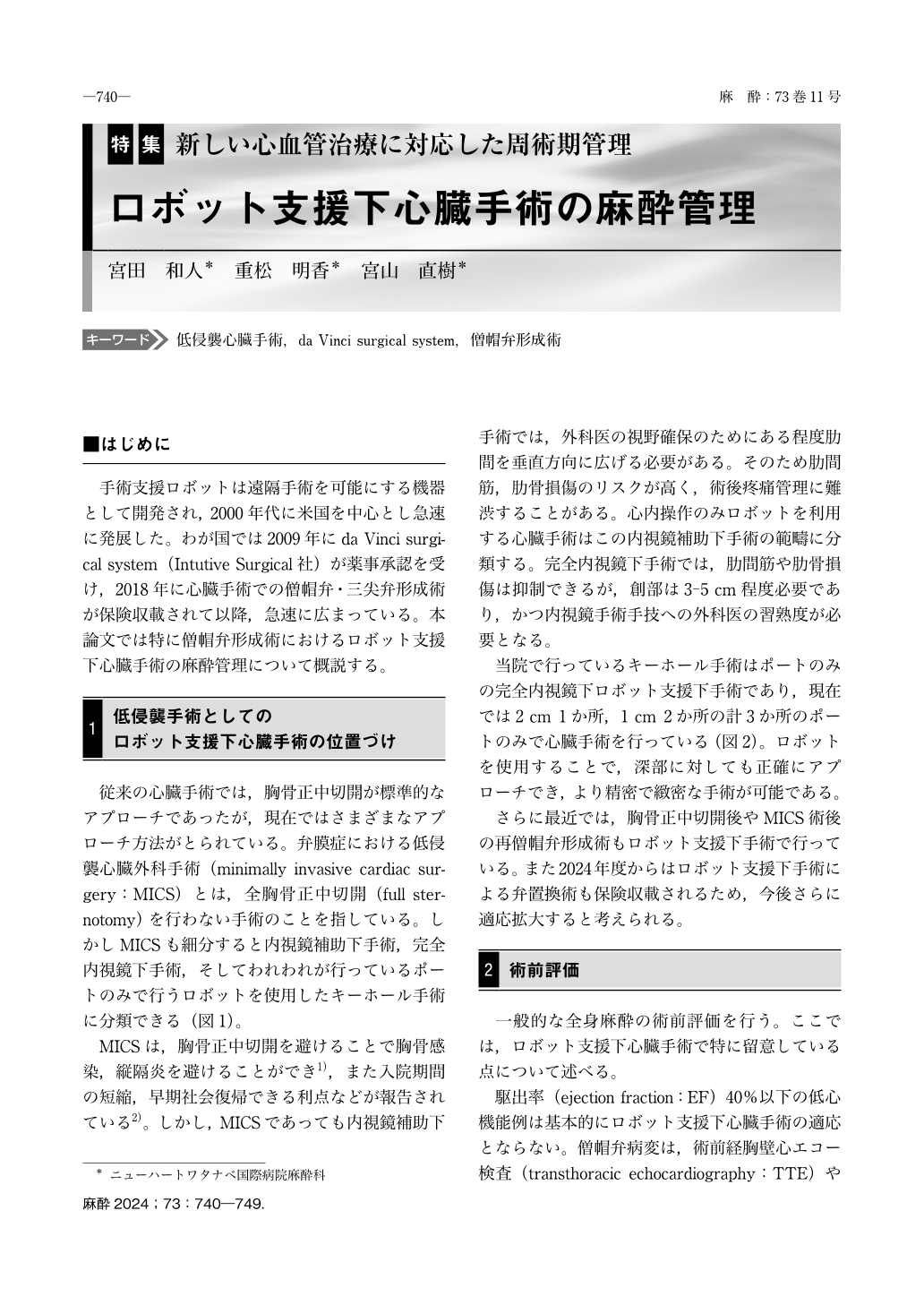Japanese
English
- 有料閲覧
- Abstract 文献概要
- 1ページ目 Look Inside
- 参考文献 Reference
はじめに
手術支援ロボットは遠隔手術を可能にする機器として開発され,2000年代に米国を中心とし急速に発展した。わが国では2009年にda Vinci surgical system(Intutive Surgical社)が薬事承認を受け,2018年に心臓手術での僧帽弁・三尖弁形成術が保険収載されて以降,急速に広まっている。本論文では特に僧帽弁形成術におけるロボット支援下心臓手術の麻酔管理について概説する。
Cardiac surgeries have traditionally been performed via a median sternotomy. The use of minimally invasive cardiac surgery(MICS)via a right mini-thoracotomy has recently become widespread. Robotic-assisted cardiac surgery using the da Vinci Surgical System and only three ports is also available. We summarize the necessary anesthetic management for robotic-assisted mitral valve repair.
After the induction of anesthesia, the venous and arterial cannula is cannulated in the standard manner. A femoral artery is usually selected, with an additional axillar artery when necessary. Intraoperative transesophageal echocardiography(TEE)is important for the diagnosis of mitral valve findings, the estimation of the systolic anterior motion risk, and guiding the cannula. One-lung ventilation is required to produce ports for the robotic arms. If hypoxemia occurs before the robotic procedure is begun, bilateral lung ventilation is necessary.
As robotic cardiac surgery is a completely endoscopic mitral valve surgery, anesthesiologists must understand both the details of the surgical procedure and the findings of the TEE examination in order to avoid complications.

Copyright © 2024 KOKUSEIDO CO., LTD. All Rights Reserved.


